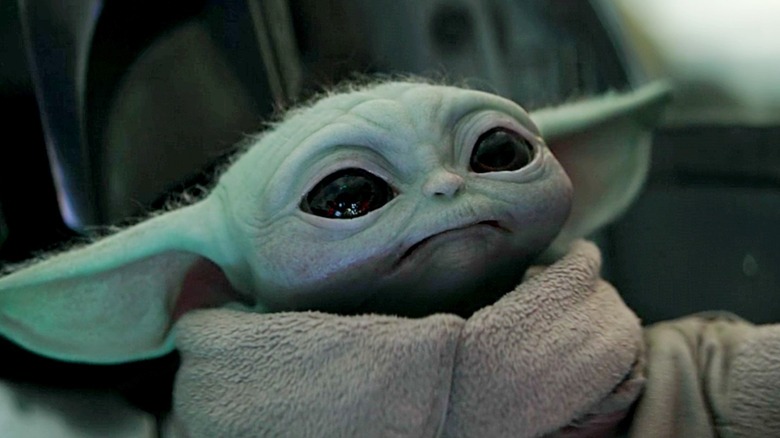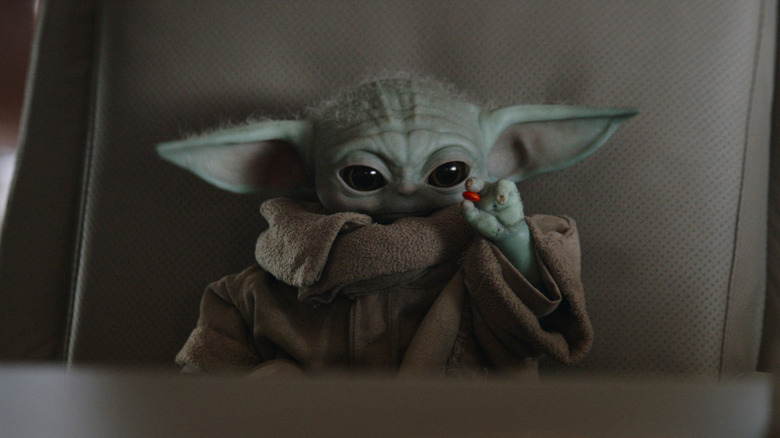The Mandalorian Season 3 Episode 2 Proves That Grogu Being A Puppet Is The Best Call
This post contains major spoilers for the second episode of "The Mandalorian" season 3.
One of the best things about the "Star Wars" franchise is that it has always utilized practical effects. Sure, they utilize tons of visual effects work, but as they learned with the prequel trilogy, completely forgoing practical makeup and puppetry for VFX is far from a good idea. While you may likely have mixed feelings about the post-Disney works of the franchise, there's no denying that its balance between practical and computer-generated effects is nearly perfect.
"The Mandalorian," and the franchise's Disney+ television affair as a whole, have really benefited from this balance. While the groundbreaking Volume technology helps out with landscapes and settings, a ton of practical effects are done to bring the various inhabitants of the galaxy far, far away to life. Arguably the best example of this is none other than that little rascal Grogu, who is brought to life via a lovingly-constructed puppet made by Legacy Effects. Thankfully, this latest episode, "The Mines of Mandalore," serves as the best proof that Grogu's appeal lies in his practical nature and that he would not be as universally adored if he was CGI-rendered.
It would be remiss of us not to clarify that Grogu isn't entirely a puppet animatronic. CGI is used on the character to make his movements more natural and to erase any signs of puppeteering from certain shots. However, for the most part, everything we see of the character on-screen is done practically, particularly his facial expressions.
Practical almost always prevails
It is these expressions that make Grogu such an entertaining POV for the majority of the latest episode. We've seen him display a range of emotions before, but not to this scale — thanks to the robust facial movements constructed by Legacy Effects, Grogu conveys happiness, fear, sadness, and curiosity in an absolutely adorable way. The same goes for his bodily movements. While those were enhanced with CGI, he still moves in a fluid yet distinctly mechanical way that can only be achieved using a real, physical puppet.
It really makes you wonder if this amount of nuanced detail would have been apparent had Grogu been entirely rendered in CGI. That is probably the case, but just depicting emotions and movement isn't the same as creating character attachments. Grogu seems so adorable because he actually is there on set, being held by Din (Pedro Pascal) or walking around in a fully-constructed background. You can actually imagine the amazingly lifelike animatronic existing to a certain degree in the real world, something even the most well-rendered CGI creations can't achieve. That, ultimately, is at the core of Grogu's appeal – he's just so adorable, we would want one for ourselves. Thank goodness Legacy Effects and the "Mandalorian" team understand this.

